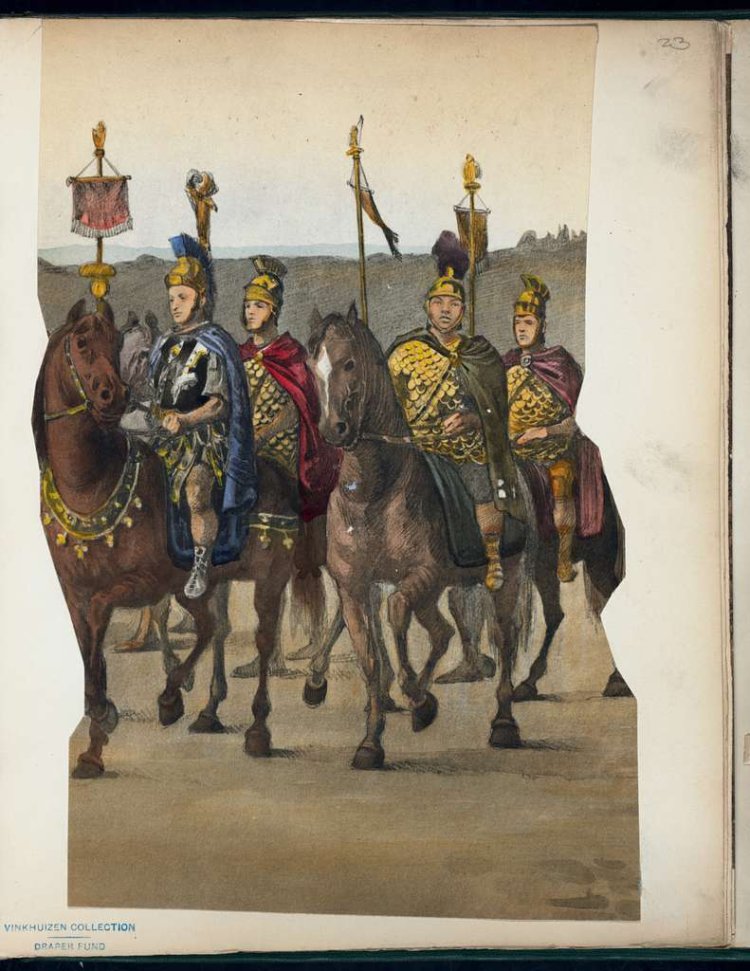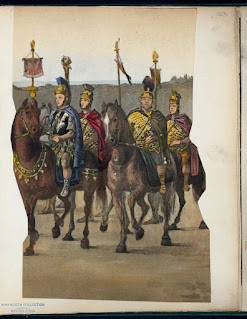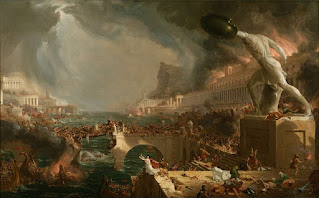How did the Roman Empire rise and fall
How did the Roman Empire rise and fall

Q :- How did the Roman Empire rise and fall?
Answer :- The rise and fall of the Roman Empire is a complex and multifaceted historical process that spanned several centuries. Its origins can be traced back to the founding of the city of Rome in 753 BC. The Roman Empire's ascent to power was characterized by military conquests, political innovation, economic growth, and cultural assimilation.
-: Rise of the Roman Empire :-
1. Early Republic (509-27 BC) :-
Rome began as a republic, where power was held by elected officials and the Senate. The expansion of Roman territory began during this period, driven by military conquests and the desire for resources.
2. Punic Wars (264-146 BC) :-
The conflicts with Carthage, known as the Punic Wars, led to Rome's dominance in the western Mediterranean. The conquest of Sicily, Sardinia, and Spain significantly increased Rome's influence.
3. Marius and Sulla (late 2nd century BC) :-
Internal conflicts emerged between the populares (favoring the common people) and optimates (supporting the Senate). The power struggle led to military commanders like Gaius Marius and Lucius Cornelius Sulla gaining political influence.
4. Julius Caesar and the end of the Republic (1st century BC) :-
The rise of Julius Caesar marked a turning point. After his conquests in Gaul, he crossed the Rubicon River and marched on Rome, leading to a civil war against Pompey and ultimately establishing himself as dictator for life in 44 BC.
-: Transition to Empire :-
1. Julio-Claudian Dynasty (27 BC - 68 AD) :-
Augustus, Caesar's adopted son, became the first Roman emperor in 27 BC. The empire experienced relative stability under the Julio-Claudian emperors, including Tiberius, Caligula, Claudius, and Nero.
2. Year of the Four Emperors (69 AD) :-
After Nero's suicide, a brief period of civil war led to the emergence of Vespasian as emperor, starting the Flavian Dynasty.
-: Peak of the Roman Empire :-
1. Pax Romana (27 BC - 180 AD) :-
The Roman Empire entered a period of relative peace and stability. During this time, trade, infrastructure, and cultural exchange flourished, contributing to the empire's prosperity.
2. Five Good Emperors (96-180 AD) :-
Nerva, Trajan, Hadrian, Antoninus Pius, and Marcus Aurelius are often considered exemplary rulers. They maintained good governance, expanded the empire's borders, and focused on the well-being of their subjects.
-: Factors contributing to the Fall :-
1. Economic Pressures :-
Overspending on the military, inflation, heavy taxation, and reliance on slave labor strained the Roman economy.
2. Military Challenges :-
External threats from Germanic tribes, Parthians, and Sassanian Persians weakened the Roman military's effectiveness.
3. Political Instability :-
Succession crises, frequent changes in leadership, and corruption within the bureaucracy eroded the empire's stability.
4. Social Decline :-
Moral decay, urban overcrowding, and the decline of civic participation contributed to societal weakening.
5. Barbarian Invasions :-
In the 4th and 5th centuries, the Huns and other barbarian groups put pressure on the Roman frontiers, ultimately leading to the sack of Rome in 410 AD and the final fall of the Western Roman Empire in 476 AD.
In conclusion, the Roman Empire's rise was driven by military conquests, political innovation, and economic growth. Its fall was influenced by economic pressures, military challenges, political instability, social decline, and barbarian invasions. The legacy of the Roman Empire continues to shape modern civilization through its contributions to law, governance, architecture, language, and culture.















